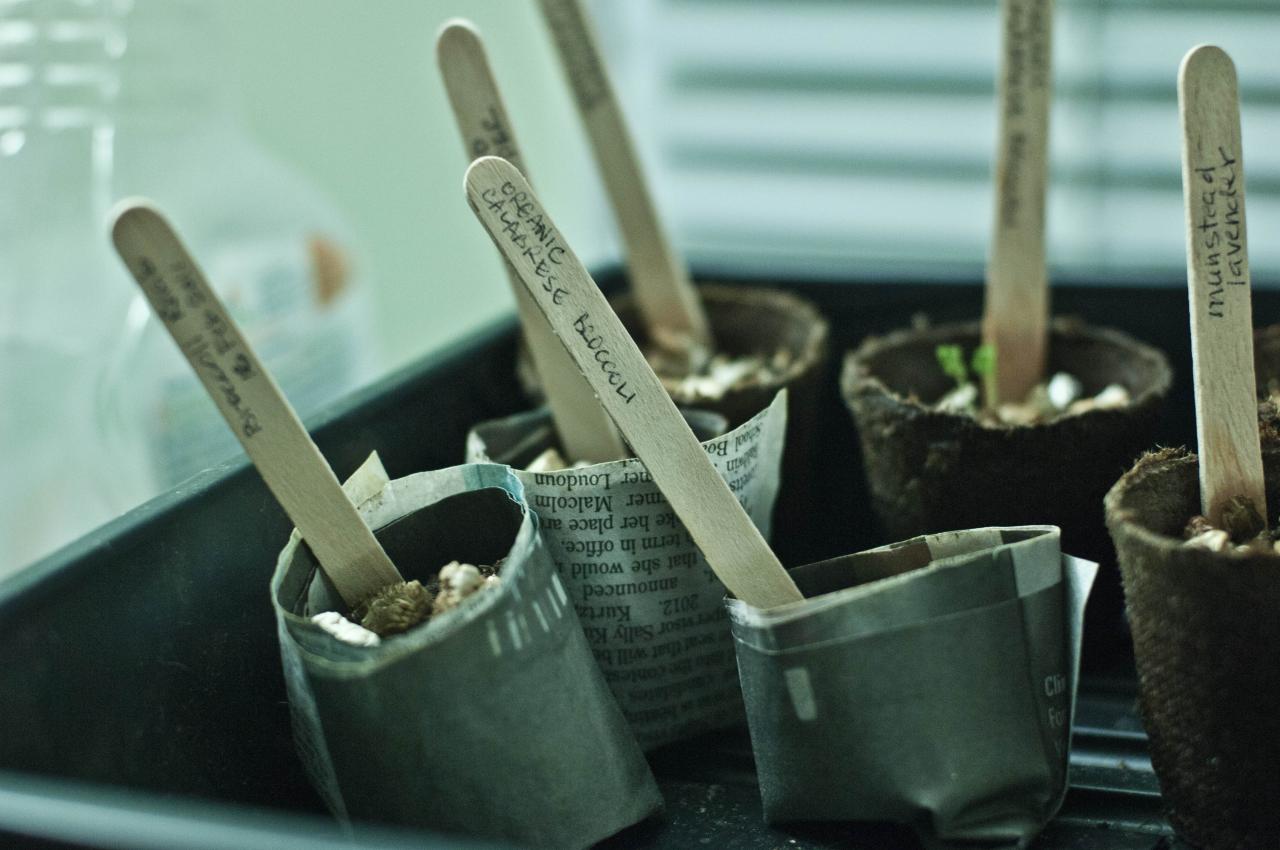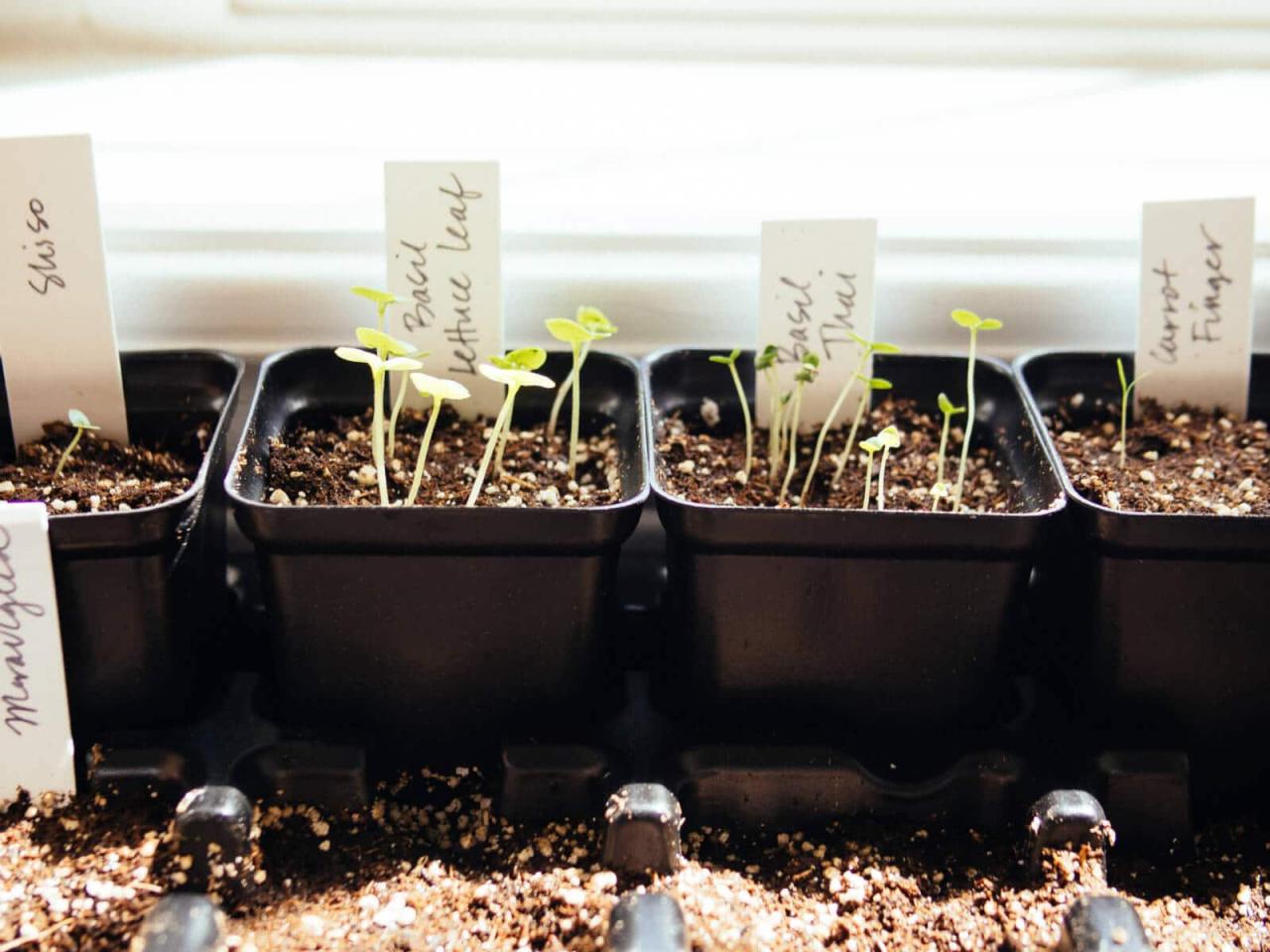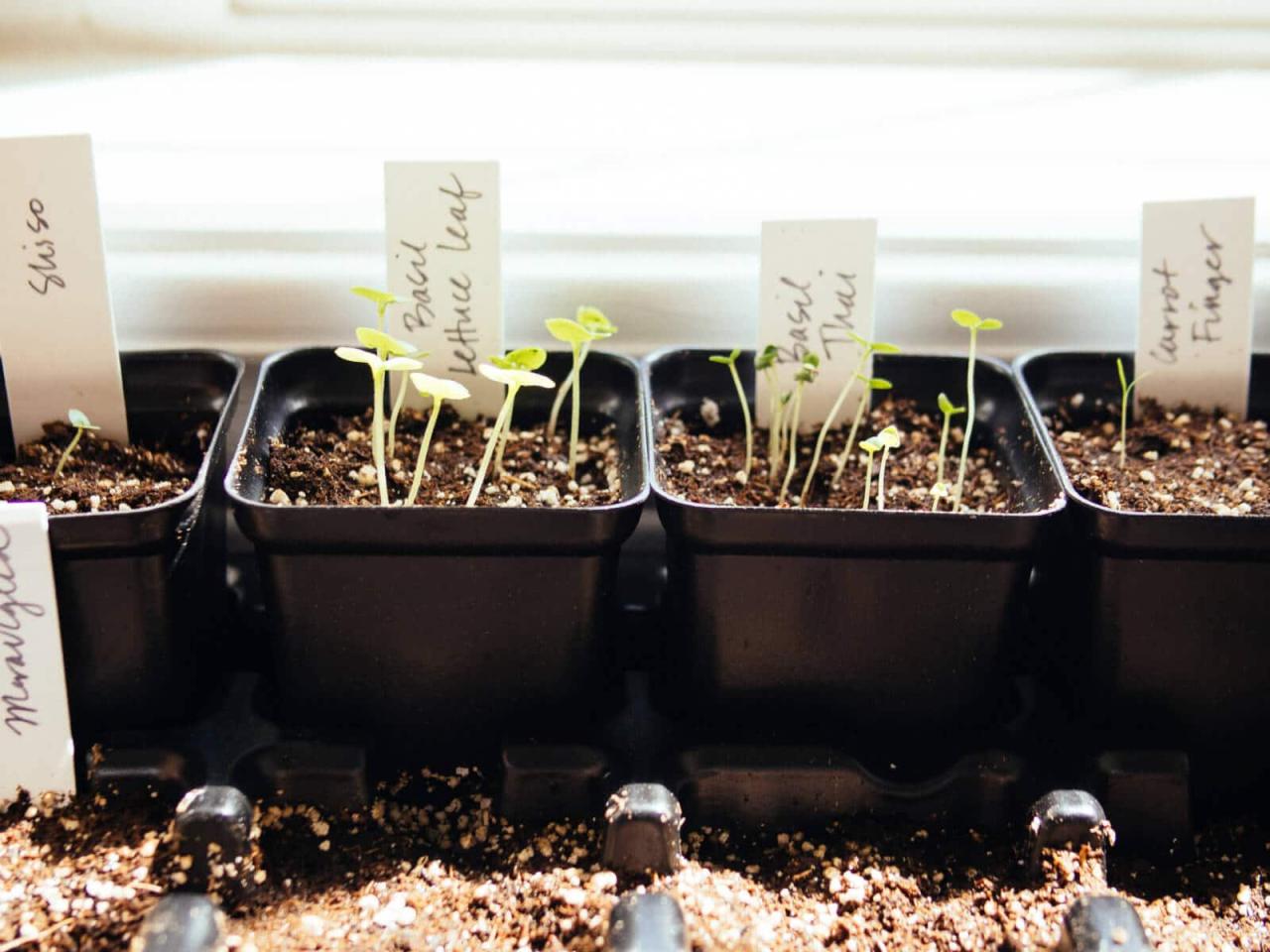How to Use Spiky Seeds to Start Your Own Pest-Free Garden sets the stage for this enthralling narrative, offering readers a glimpse into a story that is rich in detail and brimming with originality from the outset. Spiky seeds, nature’s prickly defense mechanism, hold the key to creating a thriving garden free from pesky invaders.
This article delves into the world of spiky seeds, exploring their unique characteristics, benefits, and practical applications in gardening. Prepare to discover how these seemingly simple seeds can transform your gardening experience and ensure a bountiful harvest.
From understanding the different types of spiky seeds and their pest-deterring properties to selecting the right seeds for your garden and mastering the art of planting and maintenance, this comprehensive guide will empower you to create a haven for your plants while keeping unwanted critters at bay.
Whether you’re a seasoned gardener or just starting out, this exploration of spiky seeds will provide valuable insights and practical tips to enhance your gardening journey.
Introduction to Spiky Seeds
Spiky seeds, also known as barbed seeds, are a unique type of seed that utilizes a prickly outer layer to facilitate dispersal. This prickly exterior, while seemingly a disadvantage, offers several benefits for both the plant and the gardener, making them a valuable tool for creating a pest-free garden.
Spiky seeds are a natural defense mechanism against pests, preventing them from consuming the seeds and hindering their ability to spread. Their prickly exterior serves as a deterrent, discouraging insects and animals from nibbling on them. This natural protection ensures the seeds remain intact and viable, allowing for successful germination and the continuation of the plant’s life cycle.
Types of Spiky Seeds
Spiky seeds come in various shapes and sizes, each with unique characteristics. Some are small and inconspicuous, while others are large and easily noticeable. The degree of spikiness also varies, ranging from subtle prickles to sharp, formidable barbs.
- Burdock (Arctium lappa): This plant produces large, round seeds with numerous hook-like barbs. These barbs effectively attach to animal fur or clothing, aiding in seed dispersal.
- Cocklebur (Xanthium strumarium): Cocklebur seeds are oval-shaped and have two spiky projections. These projections are sharp and can easily penetrate skin, causing discomfort.
- Sandbur (Cenchrus): Sandbur seeds are small and have numerous barbed bristles. These bristles easily attach to clothing, shoes, and animal fur, making them a nuisance for both humans and animals.
- Beggar’s Ticks (Bidens): Beggar’s ticks are small, flat seeds with two or three sharp barbs. These barbs are designed to cling to fur and clothing, ensuring seed dispersal.
Common Spiky Seeds Used in Gardening
Spiky seeds are not just a nuisance; they can also be beneficial for gardeners. Several spiky seeds are commonly used in gardening for their unique properties.
- Calendula (Calendula officinalis): Calendula seeds have a slightly spiky exterior, making them less appealing to pests. Calendula is a popular choice for its vibrant flowers and its ability to repel insects.
- Marigold (Tagetes): Marigolds are known for their pungent aroma, which repels many garden pests. Their seeds have a slightly spiky texture, further discouraging pests.
- Yarrow (Achillea millefolium): Yarrow is a hardy perennial that produces small, spiky seeds. These seeds are a valuable food source for birds and other beneficial insects, attracting them to the garden.
How Spiky Seeds Deter Pests
Spiky seeds act as a natural defense mechanism against pests, creating a physical barrier that discourages them from feeding on the plant. The spiky texture makes it difficult for pests to access the seeds, effectively protecting them from being eaten.
Spiky Seeds as Physical Barriers
The spiky texture of these seeds creates a physical barrier that makes it difficult for pests to access the seeds. This barrier can be effective against a wide range of pests, including insects, birds, and rodents.
While spiky seeds can offer a unique approach to pest control in your garden, they’re not the only way to ensure healthy and vibrant blooms. For instance, you can easily propagate African violets using leaf cuttings, which is a much faster and simpler method than relying on seeds.
How to Quickly Propagate African Violets for Stunning Blooms will provide you with a step-by-step guide. Once you’ve mastered this technique, you can apply similar principles to propagating other plants, including those that produce spiky seeds.
Spiky seeds create a physical barrier that acts as a natural deterrent against pests.
Impact of Spiky Texture on Pest Movement and Feeding
The spiky texture of the seeds can hinder pest movement and feeding. The sharp points and rough surfaces can make it difficult for pests to crawl or burrow through the seeds, discouraging them from attempting to reach the edible parts.
This can also cause discomfort and even injury to pests, further deterring them from feeding.
Examples of Pests Deterred by Spiky Seeds
Several pests are deterred by spiky seeds. For instance, birds may be discouraged from pecking at the seeds due to the discomfort caused by the sharp points. Similarly, insects like aphids and caterpillars might find it challenging to move around on the spiky surfaces, preventing them from reaching the plant’s leaves.
Spiky seeds can effectively deter a wide range of pests, including insects, birds, and rodents.
Selecting and Preparing Spiky Seeds
Choosing the right spiky seeds and preparing them properly is crucial for establishing a thriving pest-free garden. The unique characteristics of spiky seeds, such as their prickly exterior, contribute to their pest-deterring properties. Selecting the right types of spiky seeds for your garden and understanding how to prepare them for planting are essential steps in maximizing their effectiveness.
Starting a pest-free garden with spiky seeds can be a rewarding experience. These seeds, often found in plants like echinacea and sunflowers, can deter unwanted insects with their prickly exterior. To successfully cultivate these spiky wonders, you’ll need to understand their unique characteristics and planting techniques.
For a comprehensive guide on everything you need to know about growing from spiky seeds, check out Spiky Seeds 101: Everything You Need to Know to Grow from Them. Once you’ve mastered the basics, you can enjoy a thriving, pest-free garden filled with beautiful, spiky blooms.
Choosing Spiky Seeds for Your Garden
The selection of spiky seeds depends on the specific needs and characteristics of your garden. Some popular spiky seeds include:
- Prickly Lettuce (Lactuca serriola):This fast-growing annual with spiky leaves and seeds is an excellent choice for attracting beneficial insects like ladybugs, which prey on garden pests. Its spiky leaves deter herbivores, creating a natural barrier.
- Thistle (Cirsium spp.):With its spiky leaves and seed heads, thistle provides a natural defense against pests and attracts beneficial insects. It’s particularly effective against aphids and other small insects.
- Burdock (Arctium lappa):This biennial plant with spiky seed heads is known for its ability to repel various pests, including aphids, caterpillars, and beetles. Its deep taproot helps improve soil quality, making it a valuable addition to any garden.
- Yarrow (Achillea millefolium):This perennial with finely divided, feathery leaves and spiky flower heads is a natural insect repellent. It attracts beneficial insects like lacewings and hoverflies, which prey on harmful pests.
- Calendula (Calendula officinalis):Known for its vibrant orange flowers, calendula has spiky leaves and seeds that repel aphids, whiteflies, and other pests. Its flowers are also edible and can be used in salads and other dishes.
Sourcing High-Quality Spiky Seeds
Sourcing high-quality spiky seeds is essential for successful germination and healthy plant growth. Consider these tips:
- Choose reputable seed suppliers:Look for seed companies known for their quality and reliability. Check customer reviews and online forums to get insights into their reputation.
- Opt for non-GMO seeds:Genetically modified organisms (GMOs) can have unintended consequences for the environment and human health. Choose non-GMO seeds to ensure a healthy and sustainable garden.
- Purchase fresh seeds:Seed viability decreases over time. Purchase seeds that are freshly harvested or have a long shelf life to ensure successful germination.
- Check for seed certifications:Look for certifications like “organic” or “certified seed” to ensure the seeds are produced according to specific standards and are free from harmful chemicals or contaminants.
Preparing Spiky Seeds for Planting, How to Use Spiky Seeds to Start Your Own Pest-Free Garden
Proper seed preparation is essential for maximizing germination rates and promoting healthy plant growth. Follow these steps:
- Soak the seeds:Soak the spiky seeds in warm water for 24 hours before planting. This softens the seed coat and promotes germination.
- Scarify the seeds:For some spiky seeds with hard seed coats, scarification is necessary. This involves gently scratching or nicking the seed coat to allow water and oxygen to penetrate. You can use sandpaper, a file, or a sharp knife for this purpose.
- Plant in well-drained soil:Spiky seeds thrive in well-drained soil. Amend the soil with compost or other organic matter to improve drainage and nutrient content.
- Plant at the correct depth:Plant the seeds at a depth of about twice the diameter of the seed. This ensures adequate contact with the soil and promotes germination.
- Water regularly:Keep the soil consistently moist but not waterlogged. Water deeply and infrequently to encourage strong root development.
Planting Spiky Seeds

Planting spiky seeds is a crucial step in establishing your pest-free garden. Proper planting depth and spacing ensure optimal germination and growth, while soil preparation creates a favorable environment for the seeds to thrive.
Ideal Planting Depth and Spacing
The ideal planting depth and spacing for spiky seeds vary depending on the specific species. Generally, spiky seeds should be planted at a depth of about two to three times their diameter. This allows for sufficient space for the roots to develop and the seedling to emerge.
Spacing between spiky seeds is also important to ensure adequate airflow and sunlight for optimal growth. For smaller spiky seeds, a spacing of 6 to 8 inches is recommended. Larger spiky seeds may require a spacing of 12 to 18 inches.
Soil Preparation
Preparing the soil is an essential step in planting spiky seeds. Spiky seeds prefer well-drained soil with a pH between 6.0 and 7.0. To prepare the soil, you can use a garden fork or tiller to loosen the soil to a depth of at least 8 inches.
You should also incorporate organic matter, such as compost or manure, to improve soil structure and drainage.
Planting Schedule
Planting spiky seeds at the right time is crucial for successful germination and growth. The best time to plant spiky seeds is in the spring, after the last frost has passed. You can also plant spiky seeds in the fall, but it is important to choose varieties that are cold-hardy.
When planting in the fall, it is essential to ensure that the seeds have sufficient time to germinate before the ground freezes.
Maintaining a Pest-Free Garden with Spiky Seeds

Spiky seeds are a natural deterrent to many garden pests, but proper care and maintenance are essential to ensure a healthy and pest-free garden. This involves understanding the specific needs of your spiky seed plants, as well as implementing effective pest control strategies.
Watering and Fertilizing Spiky Seed Plants
Spiky seed plants, like any other plants, require adequate water and nutrients to thrive. Proper watering practices and fertilization can help promote healthy growth and deter pests.
- Watering:Spiky seed plants generally prefer well-drained soil and should be watered regularly, especially during dry periods. However, overwatering can lead to root rot and attract pests. It’s important to check the soil moisture before watering and allow the top inch of soil to dry out between waterings.
- Fertilizing:Spiky seed plants benefit from regular fertilization, particularly during their growing season. Use a balanced fertilizer, following the instructions on the package. Avoid over-fertilizing, as this can also attract pests.
Regular Monitoring for Pest Activity
Consistent monitoring is crucial for early pest detection and prevention. Regularly inspecting your plants for signs of pest activity allows you to address any issues before they become major problems.
- Visual Inspection:Regularly examine your plants for any signs of damage, such as holes in leaves, wilting, or unusual discoloration.
- Check for Pests:Look for insects, spiders, or other pests on the plants, especially on the undersides of leaves.
Natural Pest Control Methods
Spiky seeds are a natural pest deterrent, but combining them with other natural pest control methods can enhance their effectiveness.
- Companion Planting:Planting certain plants together can deter pests. For example, planting marigolds near tomatoes can repel aphids.
- Beneficial Insects:Introducing beneficial insects, such as ladybugs or lacewings, can help control pest populations.
- Neem Oil:Neem oil is a natural insecticide that can be sprayed on plants to deter pests.
- Diatomaceous Earth:Diatomaceous earth is a fine powder made from fossilized diatoms. It can be sprinkled around plants to kill insects by dehydrating them.
Creative Uses for Spiky Seeds: How To Use Spiky Seeds To Start Your Own Pest-Free Garden

Spiky seeds, often seen as a deterrent to pests, can also be used creatively to enhance your garden and add unique touches to your home décor. Their unusual shapes and textures offer a variety of possibilities for both practical and artistic applications.
Decorative Elements in Gardens
Spiky seeds can be incorporated into your garden in several ways, adding a touch of natural artistry and texture.
- Seed Pods as Ornaments:Dry seed pods of plants like teasel or poppy can be used as decorative elements in your garden. Their unique shapes and textures add visual interest and contrast to the surrounding foliage.
- Seed Pod Wreaths:Create a unique and natural wreath by weaving together dried seed pods of various sizes and textures. You can add other natural elements like dried flowers or twigs for added interest.
- Seed Pod Arrangements:Arrange dried seed pods in a vase or bowl for a simple yet striking centerpiece. You can combine them with other natural elements like dried leaves, branches, or even colorful pebbles for a more dynamic arrangement.
Crafting and DIY Projects
The unique shapes and textures of spiky seeds make them ideal for crafting and DIY projects.
- Seed Pod Jewelry:Turn spiky seeds into one-of-a-kind jewelry pieces. You can use them to create necklaces, earrings, or bracelets. Simply drill a hole through the seed pod and string it onto a cord or chain.
- Seed Pod Mosaic Art:Use spiky seeds to create mosaics on various surfaces. You can use them to decorate picture frames, boxes, or even furniture. Glue the seeds onto the surface in a pattern of your choice.
- Seed Pod Wind Chimes:Create a natural wind chime by stringing together dried seed pods of various sizes and textures. Hang them in your garden or on your porch to enjoy the gentle sounds they make in the breeze.
Natural Pest Control Solutions
While spiky seeds are primarily known for deterring pests in gardens, their potential for natural pest control extends beyond the garden.
- Spiky Seed Repellents:You can use spiky seeds to create natural pest repellents for your home. Place dried seed pods in areas where pests are likely to congregate, such as around windows or doorways.
- Seed Pod Infusions:Some spiky seeds, like those from the teasel plant, can be infused in water to create a natural pest repellent spray. This spray can be used to deter pests from plants and other areas of your home.
Conclusion
By incorporating spiky seeds into your garden, you’re not only embracing a natural and sustainable approach to pest control but also adding a unique element of texture and beauty to your landscape. The possibilities are endless, from creating eye-catching borders and pathways to crafting innovative DIY projects.
As you delve deeper into the world of spiky seeds, you’ll discover a wealth of knowledge and inspiration, allowing you to cultivate a flourishing garden that’s both pest-free and aesthetically pleasing. So, embrace the power of nature’s prickly defense and unlock the secrets to a thriving, pest-free garden with spiky seeds.
FAQ Overview
What are some examples of spiky seeds commonly used in gardening?
Some common examples include prickly lettuce, thistle, and burdock.
Can I use spiky seeds in containers or only in the ground?
You can use spiky seeds in both containers and in-ground gardens.
How often should I water spiky seed plants?
Water spiky seed plants regularly, ensuring the soil is moist but not waterlogged.
